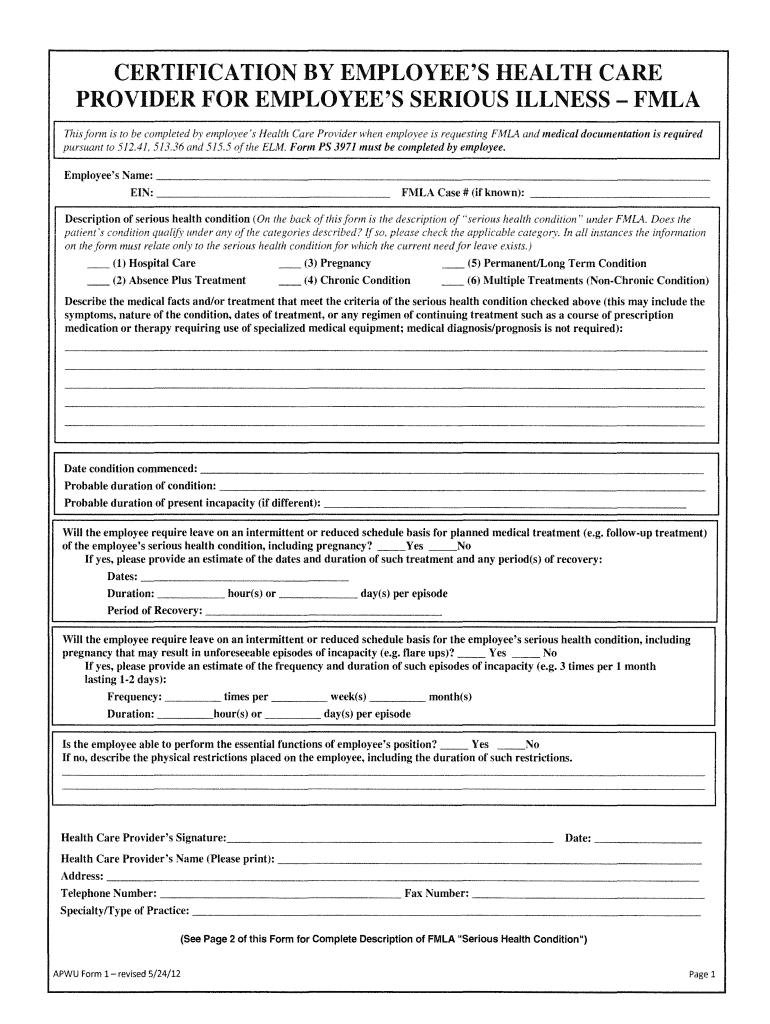Who Signs FMLA Paperwork? Key Details Inside

Understanding the FMLA: Who Signs the Paperwork?

The Family and Medical Leave Act (FMLA) provides critical support for employees needing to take leave for medical reasons, either for themselves or to care for family members. However, understanding who is responsible for signing FMLA paperwork can be perplexing. In this comprehensive guide, we’ll dive into the specifics to clarify who signs the FMLA documents, ensuring a seamless process for both employers and employees.
The Parties Involved in FMLA Paperwork

FMLA paperwork involves multiple parties, each with distinct responsibilities:
- Employee: The person requesting leave.
- Employer: The company or organization that employs the individual.
- Healthcare Provider: A licensed professional responsible for diagnosing and documenting the medical condition necessitating the leave.
Let’s break down their roles:
Employee’s Role

The employee initiates the FMLA process by:
- Notifying the employer about the need for leave.
- Completing necessary forms and providing personal details.
- Ensuring the correct submission of all required documentation to the employer.
Employer’s Role

Employers have several responsibilities:
- Acknowledging the employee’s request for leave.
- Providing the employee with the necessary FMLA forms and information.
- Ensuring the employee understands their rights and obligations under FMLA.
- Processing the forms and maintaining confidentiality.
Healthcare Provider’s Role

The healthcare provider’s role includes:
- Completing the medical certification section of the FMLA forms.
- Verifying the need for leave due to a serious health condition or family care.
- Providing a clear, professional opinion on the employee’s condition.
Who Actually Signs the FMLA Documents?

The signing of FMLA documents typically involves the following:
| Document | Who Signs |
|---|---|
| FMLA Notice and Designation Form | Employer |
| FMLA Medical Certification Form | Healthcare Provider |
| FMLA Leave Request Form | Employee |

🔍 Note: While employees initiate the process, the employer signs the designation notice to confirm the approval or disapproval of leave.
Detailed Process of Signing FMLA Paperwork

To clarify how FMLA paperwork is signed, consider the following steps:
Employee Initiates Leave Request

- The employee first informs their employer about the need for FMLA leave.
- They fill out the FMLA Leave Request Form, signing it to authorize the request.
Employer Responds to Leave Request

- The employer reviews the request and, upon approval, signs the FMLA Notice and Designation Form.
- This form designates the leave as FMLA-protected, outlining its terms and duration.
Medical Certification

- The healthcare provider completes the FMLA Medical Certification Form, signing it to validate the medical necessity of the leave.
- This form is then submitted back to the employer, who may accept it or seek additional information if unclear or incomplete.
🔍 Note: Employers can request second or third opinions if the initial certification lacks detail or clarity.
Important Considerations and Responsibilities

- Confidentiality: Employers must maintain the confidentiality of medical information provided.
- Timely Processing: Employers are required to respond promptly to FMLA requests and certifications to avoid disrupting the employee’s leave.
- Communication: Clear communication is vital between all parties to ensure that the FMLA process is understood and adhered to.
In essence, the FMLA signing process ensures that all necessary parties are involved and that the leave is correctly documented, protecting both the employee’s rights and the employer’s obligations. Employees must understand the intricacies of initiating the process, while employers need to handle the documentation with due diligence and care. This balance ensures that the FMLA fulfills its purpose, providing legal protection and security during personal or family health crises.
Can an employee be denied FMLA if the healthcare provider’s certification is not clear?

+
While an unclear certification can prompt an employer to request additional information, outright denial of FMLA based solely on unclear certification is not typical. Employers can seek further clarification, but if the condition and need for leave are verified, FMLA should be granted.
Do I need to provide medical details to my employer?

+
While you don’t disclose your entire medical history to your employer, the healthcare provider’s certification must include details on the condition, treatment plan, and leave requirement to justify FMLA.
What happens if my employer refuses to sign the FMLA paperwork?

+
If an employer refuses to sign FMLA paperwork without a valid reason, this could be seen as interference with your FMLA rights. You should consult with an HR representative or consider legal advice to ensure your rights are protected.
How soon should the employer respond to my FMLA request?

+
Under the FMLA regulations, employers are required to respond to an employee’s request for leave within five business days. This allows for timely planning and protection of employee rights.
Can an employee’s spouse also take FMLA leave for the same event?
+Yes, both spouses can take FMLA leave concurrently for the same family event, such as the birth or adoption of a child, or to care for a sick family member. However, their combined leave cannot exceed the 12-week limit per year.



